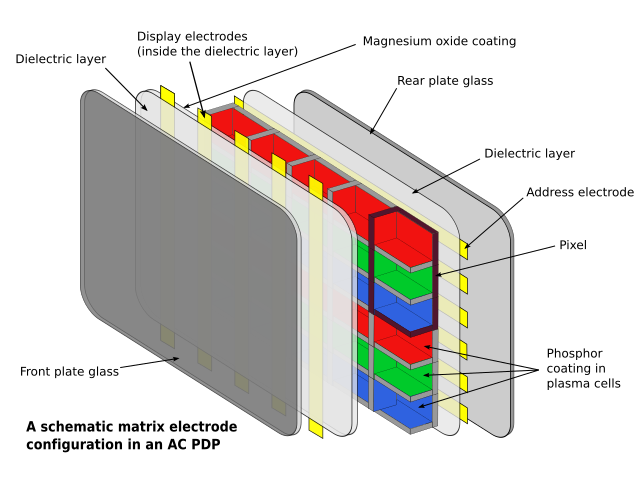There are three basic
systems that are used to recognize a person's touch:
- Resistive
- Capacitive
- Surface acoustic wave
The resistive system consists of a normal glass panel that is covered with a conductive and a resistive metallic
layer. These two layers are held apart by spacers, and a
scratch-resistant layer is placed on top of the whole setup. An
electrical current runs through the two layers while the monitor is
operational. When a user touches the screen, the two layers make contact
in that exact spot. The change in the electrical field is noted and the
coordinates of the point of contact are calculated by the computer.
Once the coordinates are known, a special driver translates the touch
into something that the operating system can understand, much as a computer moouse driver translates a mouse's movements into a click or a drag.
In the capacitive system, a layer that stores electrical charge
is placed on the glass panel of the monitor. When a user touches the
monitor with his or her finger, some of the charge is transferred to the
user, so the charge on the capacitive layer decreases. This decrease is
measured in circuits located at each corner of the
monitor. The computer calculates, from the relative differences in
charge at each corner, exactly where the touch event took place and then
relays that information to the touch-screen driver software. One
advantage that the capacitive system has over the resistive system is
that it transmits almost 90 percent of the light
from the monitor, whereas the resistive system only transmits about 75
percent. This gives the capacitive system a much clearer picture than
the resistive system.
On the monitor of a surface acoustic wave system, two transducers (one receiving and one sending) are placed along the x and y axes of the monitor's glass plate. Also placed on the glass are reflectors
-- they reflect an electrical signal sent from one transducer to the
other. The receiving transducer is able to tell if the wave has been
disturbed by a touch event at any instant, and can locate it
accordingly. The wave setup has no metallic layers on the screen,
allowing for 100-percent light throughput and perfect image clarity.
This makes the surface acoustic wave system best for displaying detailed
graphics (both other systems have significant degradation in clarity).
A resistive system registers a touch as
long as the two layers make contact, which means that it doesn't matter
if you touch it with your finger or a rubber ball. A capacitive system,
on the other hand, must have a conductive input, usually your finger,
in order to register a touch. The surface acoustic wave system works
much like the resistive system, allowing a touch with almost any object
-- except hard and small objects like a pen tip.
![How Does a Touchscreen Work photo How Does a Touchscreen Work Touch screens. How do they work? [Infographic]](http://www.mycricket.com/community/sites/all/uploads/images/the_411/infographics/How_Does_a_Touchscreen_Work.jpg)






















